Jeonju is a cultural gem in the middle of South Korea. Known for its traditional architecture and raw beef bibimbap, this old city has been rejuvenated by modern upgrades and remains one of Korea’s most popular destinations. A walk through this city can be crowded at times, but it’s easy to see why so many people pilgrimage to this tile-roofed Mecca. We’ve visited Jeonju several times and are always happy to return, as it is truly one of the greatest cities in South Korea. Frankly, we’re pretty dumbfounded to realize that we’ve never dedicated a post to this beautiful city before now!

Jeonju isn’t, by any stretch of the imagination, a newly discovered destination. It is, however, about to come alive with color as Korea finishes summer and enters into autumn. With the colors changing and the hillsides surrounding Jeonju turning brilliant warm colors, we recommend anyone waiting to see Jeonju, or simply needing an excuse to return to make your plans now! We’ve been to Jeonju in every season and Fall is easily the most beautiful and well-suited (visually) to the traditional architecture for which Jeonju is known. This city is always an enjoyable destination, but fall is especially beautiful. Below we’ve come up with our top reasons to see Jeonju, especially in this upcoming season.
1. The Hanok Village
Among the cobbled streets and food stalls lining the Hanok Village of Jeonju, every visitor is sure to find the charm of this great city. Jeonju’s Hanok Village is easily recognized as one of the most common destinations in Korea outside of Seoul and Busan, and any length of visit will show why. The tiled-roofs of a bygone era are kept alive in this sprawling neighborhood and this style can be seen in almost any direction while in the city. From several lookout points and elevated cafes, visitors to Jeonju can get an elevated and special perspective of the city’s picturesque landscape. Back down on the street, a world of food, art, and music awaits.
More information: Let’s go to… Jeonju!
2. Hanokstay

The hanok houses aren’t just beautiful, though, as many are able to be reserved as lodging. Staying the night in one of these iconic Korean homes is a great way to get in touch with Jeonju. Beyond the hanok, the streets of this village are literally lined with beautiful tea houses, souvenir shops, and traditional Korean games dating back to the dynastic ages, as well as several national heritage sites where tourists can deepen their understanding of Korean history in the area.
More information: Hanokstay Guide
3. Jeonju Bibimbap
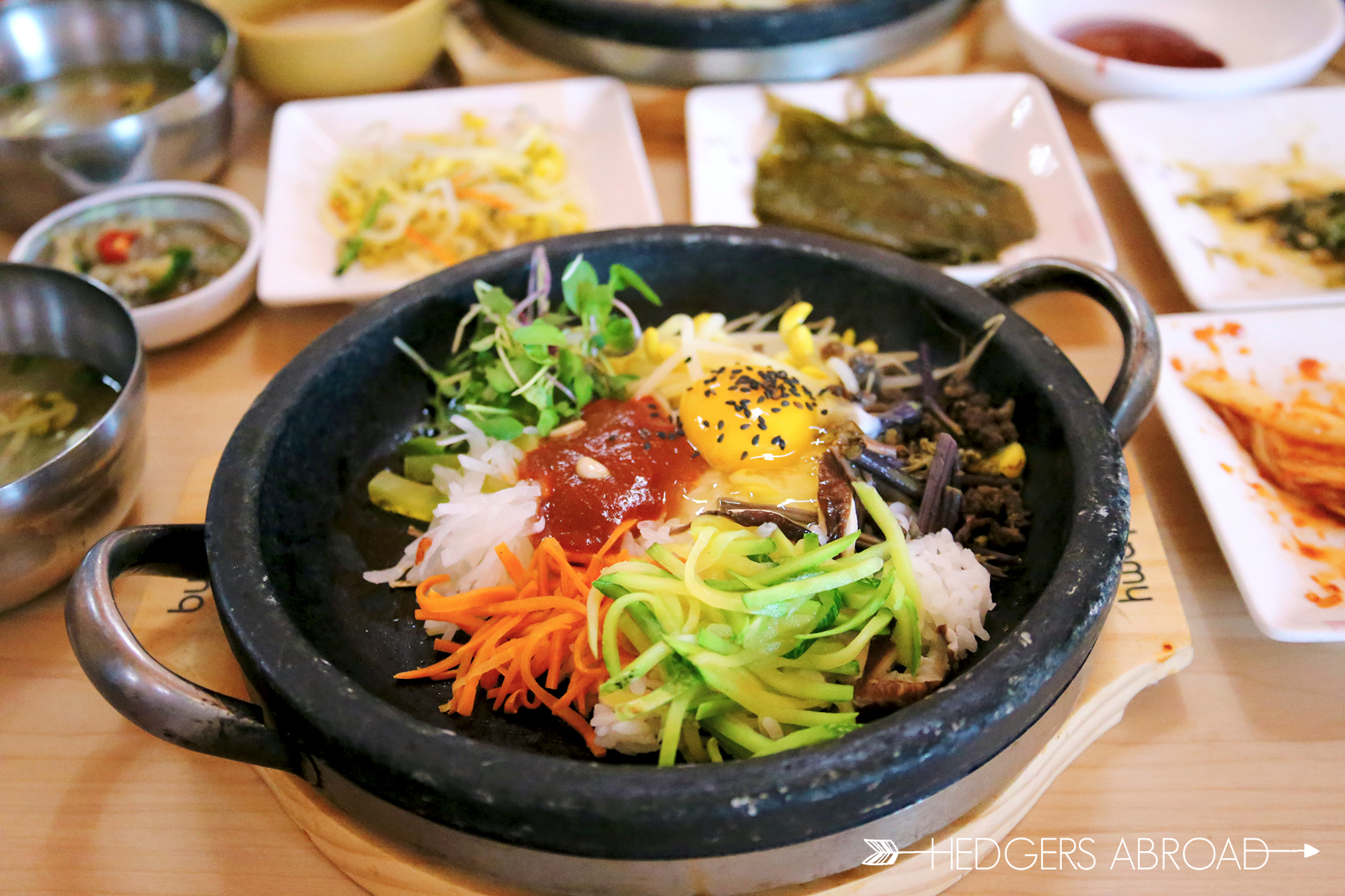
Being a fairly traditional city steeped in heritage, visitors to Jeonju would be remiss for avoiding certain staples of Jeonju culture. First, the bibimbap is a must. While this national dish is well loved from every corner of this country, Jeonju’s is the most revered. Some people might have some apprehension about raw red meats, but anyone who’s had it before can attest to its safety and incredible taste. There are dozens of opportunities to taste this special regional dish, so don’t get too upset when you see the crowds lined up for the most popular restaurants.
4. Hanbok
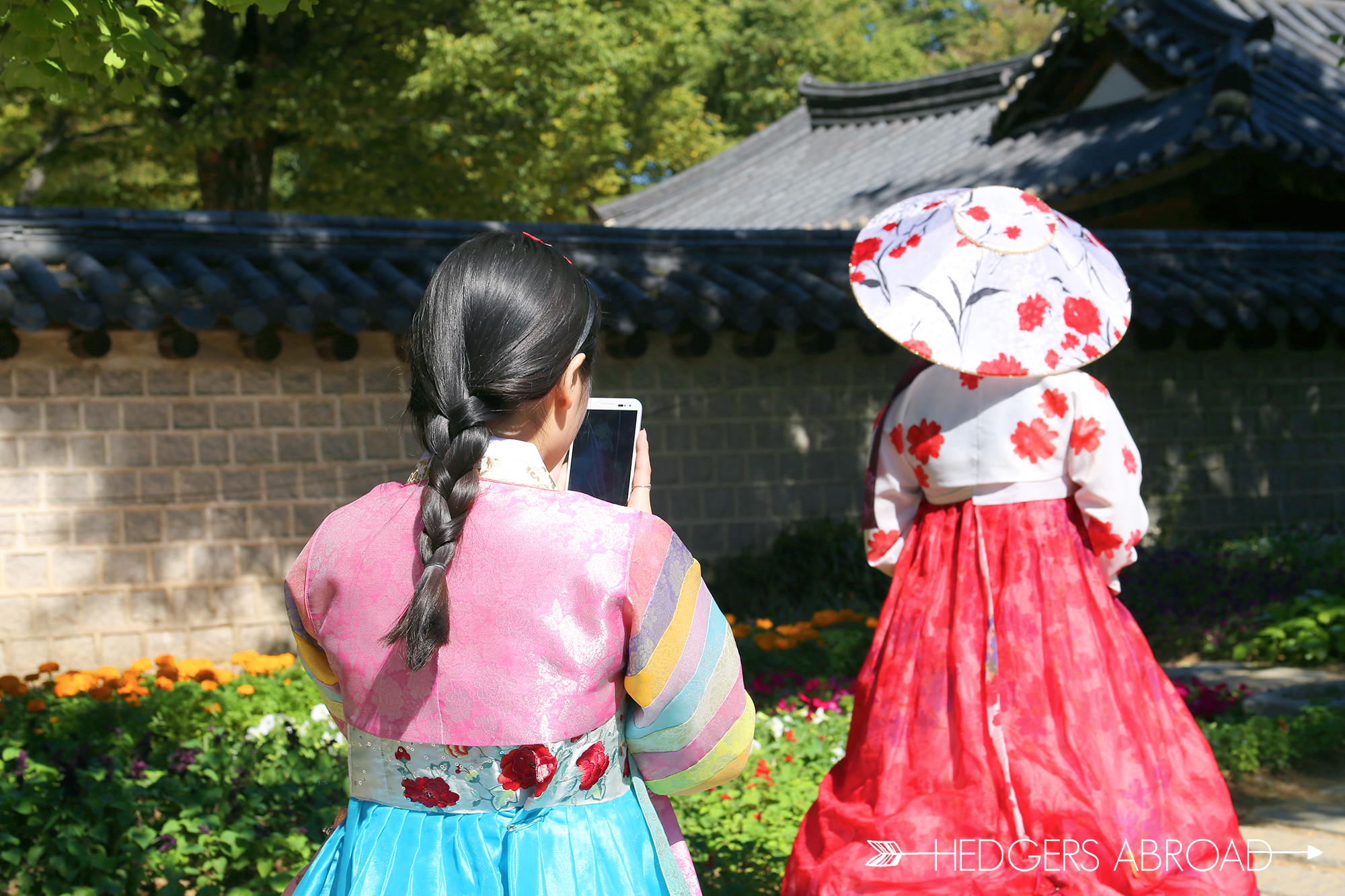
To cap off a trip to Jeonju, we suggest renting some traditional clothing from one of the many shops near the Hanok Village. Worn for ceremonial attire since the Joseon Era, this type of clothing (which simply translates into “Korean Clothes”) is a colorful homage to Korea’s past as much as the nearby buildings and architecture in Jeonju. Photo opportunities abound in this wonderful city, and renting hanbok for a few hours is a very cheap way to make the photos special. While in town, you’re sure to see flocks of friends and couples scouring the city for photos while wearing hanbok, or playing traditional Korean games.
5. The Makgeolli Hut with FREE FOOD

Without reservation, we know the greatest makgeolli hut in existence and it’s located in Jeonju. Why is this place so special? With purchase of makgeolli, you are served endless food FOR FREE. Many restaurants across Korea will bring you side dishes with your makgeolli order, but this “Mak-Hut” goes above and beyond. Not only do they serve delicious regional rice wine, but their food is exceptional and in quantities we’ve nowhere else experienced. Essentially, you order some wine and get a free, delicious meal.
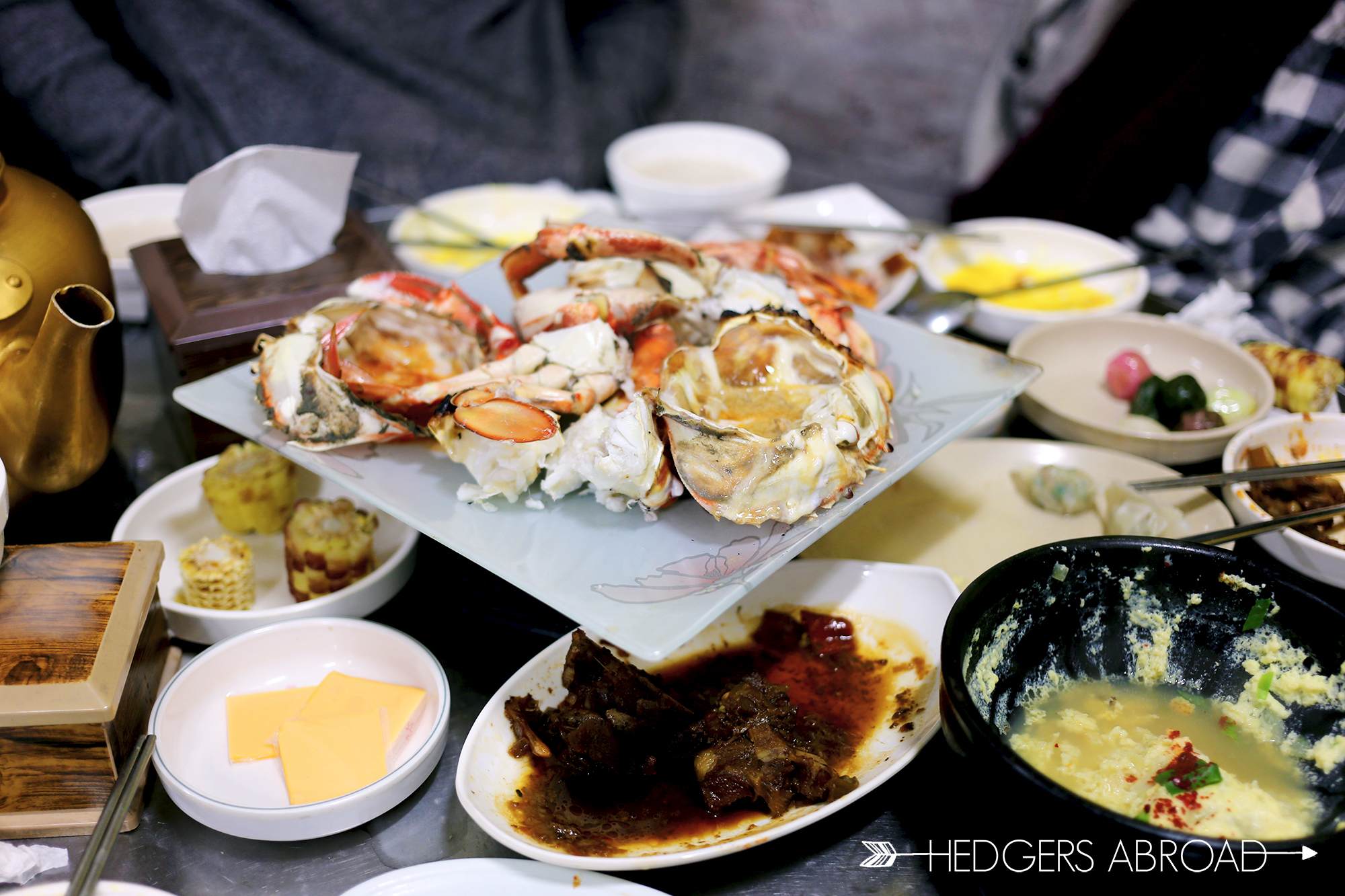
We won’t list out every single dish we’ve been served at the Jeonju Mak-Hut, but know beforehand that this story omits many masterfully crafted and abundantly portioned dishes. I can’t stress enough how much food you get to accompany your makgeolli. Generally they’ve served us our first kettle of with standard fare of kimchi and tofu, some sprouts, and some pickled radishes. As the “mak” keeps flowing, however, the dishes continue like 8-10 minute clockwork, escalating into full crab entrees, pajeon, soups, marinated rib meat (galbi), and dozens the makgeolli has erased from my memory.

The key to the Mak-Hut is three-fold: pacing, teamwork, and safety. With the right game plan and enough people joining in, a trip to the Mak-Hut can easily fill your afternoon and evening. Be sure to be safe and plan for a ride afterwards, as it’s unlikely patrons will be fit to operate vehicles. This restaurant truly is amazing and we haven’t even mentioned that the cost of this dining experience comes down to your makgeolli alone. We stayed for 3 hours our first visit and our bill totaled less than 30,000KRW ($28) between four people. It should be pretty clear why we love this place, but you should see it for yourself.
6. Street Food
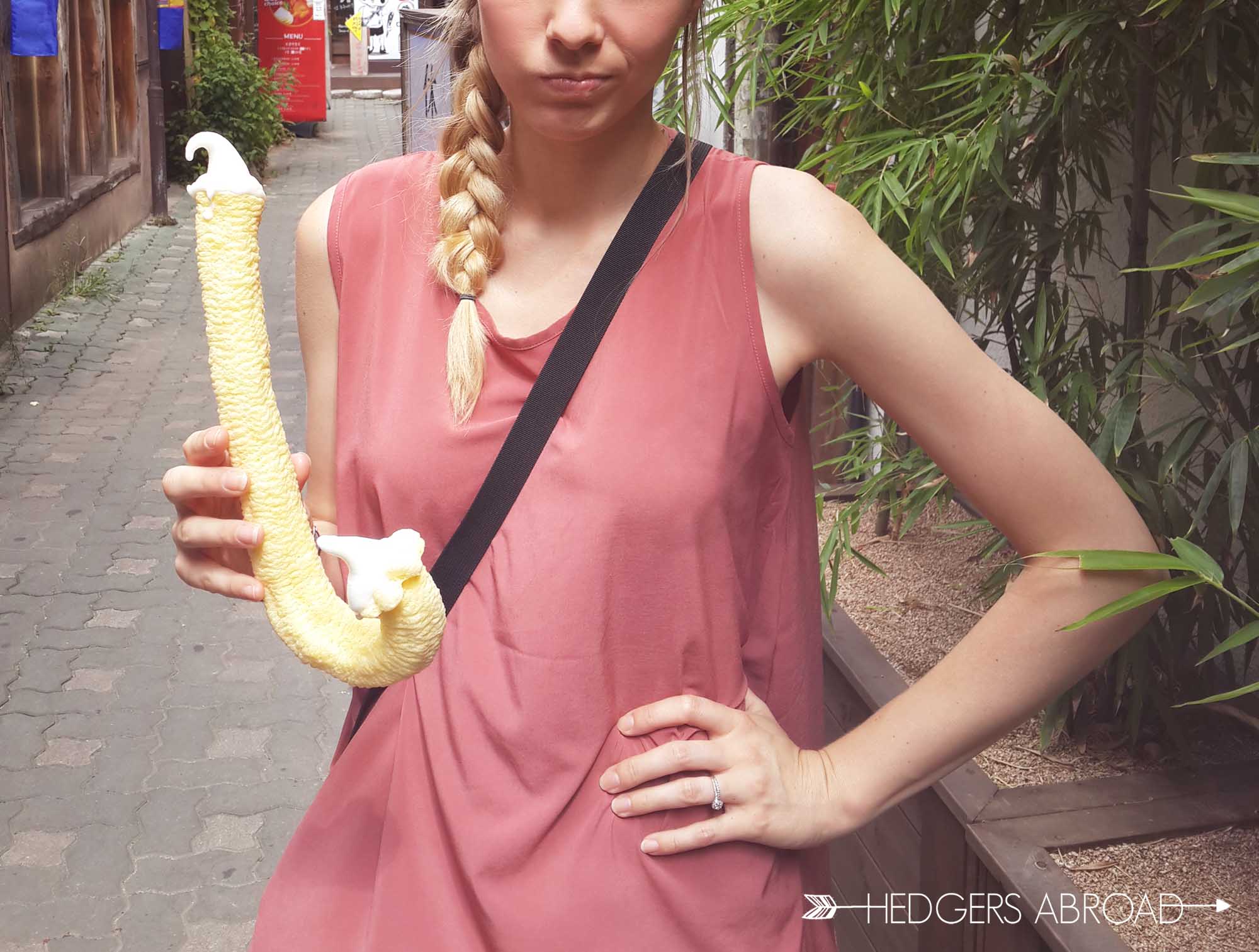
The main street that runs through Jeonju’s Hanok Village is lined with all sorts of exciting shops, delicious restaurants, and street performers. Being pushed along the cobbled street, though, are another gem of Jeonju that can’t be overlooked: street food vendors. Lovers of stick-meats, spicy broths, and miniature versions of full meals need look nowhere else. There are Jeonju-specific street foods like “Bibim-Bingsu” that is a bingsu desert with toppings designed to appear as the vegetables found in the famous Jeonju Bibimbap (we can assure you, though, that there are no veggies). You can also find just about any other street foods you’d expect to find anywhere else, but we found the quality of everything to be higher than typical in Jeonju.
7. Deokjin Park

Where the village gets most of Jeonju’s attention; Deokjin Park is the most beautiful and mesmerizing area of this wonderful city. Boasting a massive pond and a location removed from the crowds you’re likely to find at the Hanok Village, the park is a natural and beautiful escape from the throngs of people. This pond is bisected by a suspension foot bridge replicating the typical modern bridges found throughout Korea. On one side of this bridge is a pond with paddle boats for rent- on the other is a bank-to-bank sea of green plant growth. Lotus pads and flowers cover every inch of this shallow end of the pond and create a dramatic landscape that is as mesmerizing as it is peaceful. Around the park is a walking path with statues, food, and great areas to enjoy views of the musical fountain or the pond itself.
More information: Let’s go to… Deokjin Park!
8. BONUS: Jinan Red Ginseng Spa
If you have enough time to grow tired of Jeonju’s offerings, we have one more suggestion in the area. For people needing to escape the city (or more likely nurse a hangover after a night at the Makgeolli Hut) there is a wonderful mixed-gender spa located a few miles away. Jinan is known for its red ginseng, and the entire spa incorporates this tradition. The Red Ginseng Spa in Jinan was a wonderful experience and possibly our favorite spa we’ve visited in Korea. Check out the video if you need some more convincing!
More information: Let’s go to… The Red Ginseng Spa!
Have you been to Jeonju? Is there anything we have missed from our list? Let us know in the comment section below. We love hearing from you!
More Jeonju Posts:
Let’s Go To… Jeonju’s Deokjin Lotus Flower Park
The Rooftop Jeonju Hanok Geusthouse
Our Jeonju Weekend Getaway Video
Where to See Spring Blooms in Jeonju
Let’s Go To… The Red Ginseng Spa
Hanokstay Guide



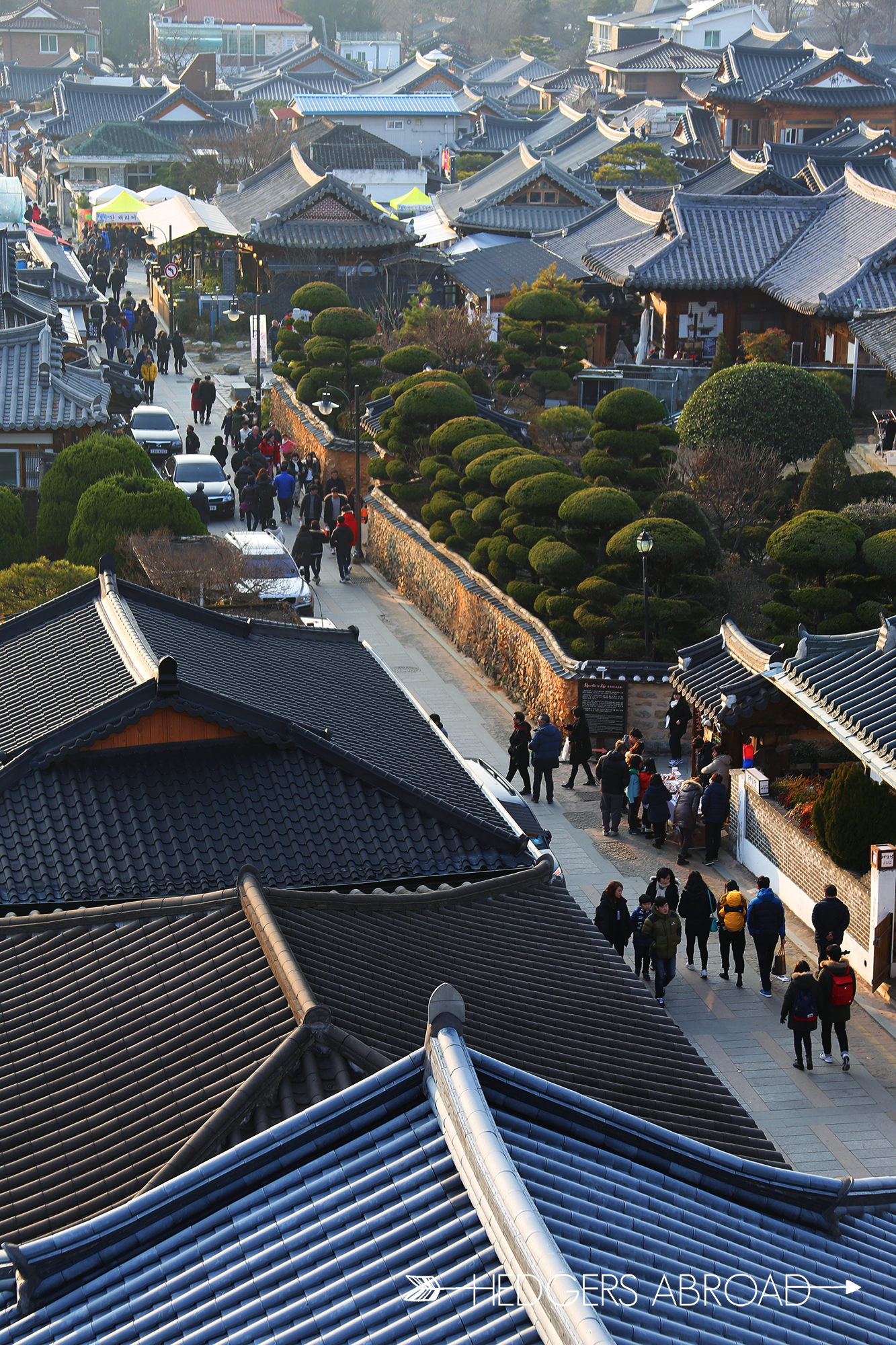

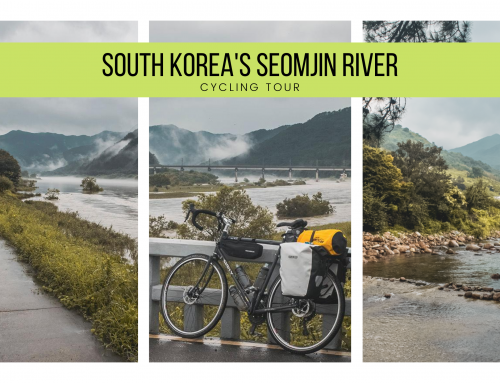
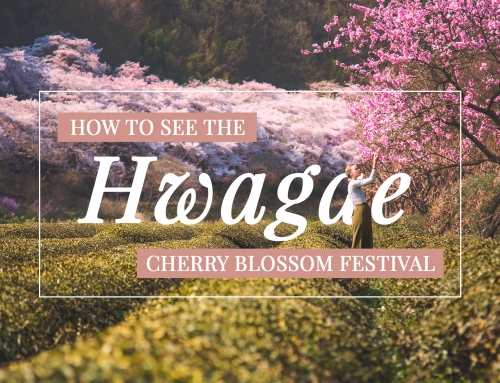



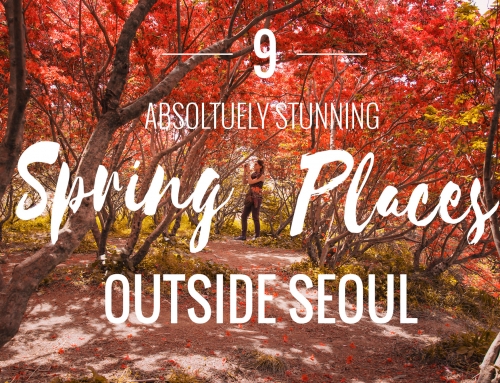
Such nice place to visit. I really would like to try Jeonju Bibimbap, It looks tasty and healthy. 🙂 Thanks for sharing this post
The first six mentioned can also be experienced in Seoul. Deokjin Park and Jinan Red Ginseng Spa looks interesting! It’s my first time to see a Jjimjilbang without naked people walking around. LOL.
Yes you can find similar areas in Seoul such as the Bukchon village, but no where near to the size and scale that you will find in Jeonju. Jeonju is a unique place that is unlike anything you will ever find in the capital city.
Ooooohhhh I love this! I’m heading to Jeonju for Christmas this year and this has made me even more excited. We’re staying in a hanok house and gonna eat so much bibimbap. I will definitely be keeping my eye out for the makgeolli jib! Your hanbok looked so cute, I’ve still not worn one yet- maybe I should do it on Christmas day! It will be my final Christmas in Korea so seems like good timing! Thanks for sharing, so glad I came across this post! 🙂
I might have to check out Jeonju simply for the Deokjin Park. That photo looks incredible!! The makgeolli hut also seems like a very appealing offer haha. Thanks for taking the time to write this post!
Ah Jeonju~ My grandma and grandpa used to live there so I have a lot of memories. The day I went to the Hanok village it was a little bit drippy, but the rain gave it a really romantic vibe. I agree the dolsot bibimbap is to die for! The food there reminds me of my gran haha. Anyway amazing pictures! Looking forward to more posts!
So much had been written about the Jeonju Hanok Village and Hanok stay that it makes me over jealous as i have no way of knowing when we can ever do that as a family:-(
Wow! So many things to do in Jeonju now. The first time I was there was in 2003 and in the Hanji store they were playing Britney Spears ~ and I chuckled at the incongruity.
Jeonju was only a 45 min ride from Daejeon so it was the perfect weekend escape. I went twice and loved it so much! Seriously that street food culture is out of control. I loved the little hike up the hill with that stunning view of all the wooden rooftops. Wish I had known about the Mak Hut sooner as I do love my makgeolli! But that raw bibimbap was so divine. I found out in Korea I’m a huge fan of hoe dishes!
Awesome Awesome post! Seems like such a rad area. The Makgeolli hut seems like a must-do! I can’t believe how much food you got for free. I wonder how all that started! As someone who is into photo and video, I can’t help but appreciate your fantastic photos. Keep up the great work!
I’m actually going to Jeonju this weekend so this is perfect for me! I’ve been once before as a pit stop between Jindo and Seoul. We only got to have the bibimbap so I’m so stoked on everything else you mentioned. I wonder if we can find the Makgeolli hut… Yummmm
I love Jeonju too! Now that I have my own hanbok, I should just stroll the street in search of the Mak Hut and the beautiful Deokjin Park. It seems that no matter how many times different bloggers/friends/travelers visit the same place, they almost always find new things to discover and share. Pinning!
There’s such a thing such as a red ginseng spa??? HAHA that is absolutely amazing! Also, how does Makgeolli Hut earn money if they keep serving such good food? How much is the Makgeolli there? Is it your typical Makgeolli? I’m soo curious!
[…] WHY YOU NEED TO GO TO JEONJU NOW […]
[…] has a ton of things to see and do, so if you are looking for some more in depth information, check out our post about must see things in Jeonju! You will definitely have plenty to do, see, eat, and drink throughout your […]
[…] Why You Need to go to Jeonju NOW […]
[…] being the home to Andong Jjimdak, our favorite Korean food. Likewise, bibimbap lovers should visit Jeonju, dakgalbi fanatics should pilgrimage to Chuncheon, and those looking for seafood should visit just […]